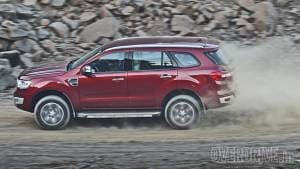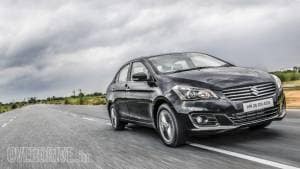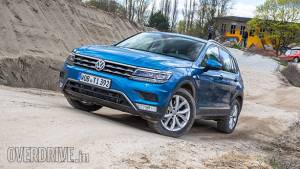Comparo: Tata Tiago Revotorq vs Maruti Suzuki Celerio DDiS
When Maruti Suzuki launched the Celerio diesel in 2015, the biggest highlight was its 793cc twin-cylinder diesel engine. The format's usually seen in smaller LCVs, but the motor in the Celerio was tuned to offer a good mix of driveability and incredible fuel efficiency. Cut to 2016 and Tata has introduced the Tiago with a newly developed 1,047cc three-pot diesel to pose a serious threat to the Celerio. It's going to be an interesting fight.
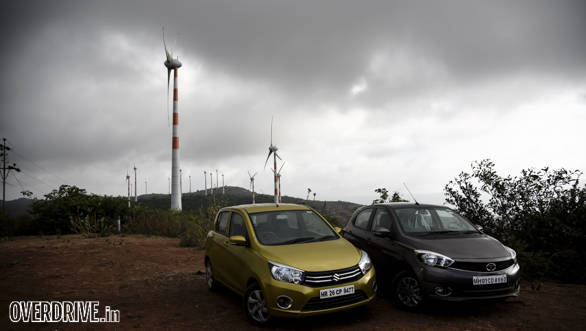
Design and Interior
The Tata Tiago is without doubt the nicer looking car here. The neatly designed front end, with the piano finish grille and flanked by the bug-eyed head lamps, give the car a cute face. The side profile has a lovely crease line that gels into the rear tail lamp and adds a dash of flair. At the rear, the central portion of the bumper is blacked out which helps in cutting visual mass. The tail lamps are shaped like an almond and enhance the design, making it contemporary. Overall the Tiago looks proportionate, with its cohesive design and chic European looks.
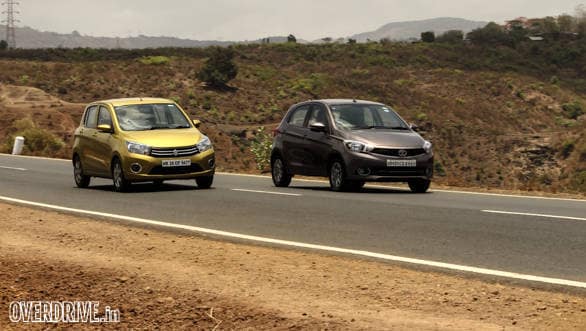
The Celerio, meanwhile, pales in comparison. The design has already begun to show its age mainly because of the car's shape. It almost seems like the Celerio is trying too hard to look good. No, it isn't offensive to look at, but the Tiago is simply better.
This holds true for the interiors too. The Tiago's dashboard has an elegant design with the hexagonal centre console taking pride of place. Tata's use of gray and black dual tones on the dashboard is well executed, and the quality of plastics is a marked improvement over the previous Tatas. There's just the right amount of chrome on the door levers and the bezels around the AC vents, lending the interior a subtle flair.
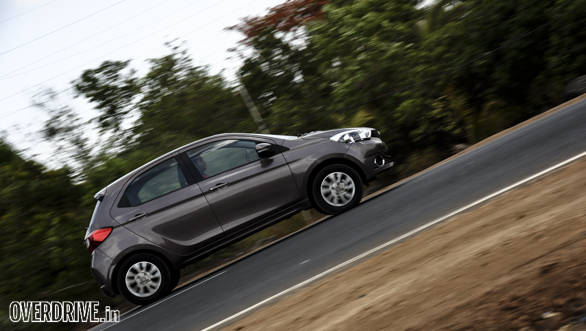 The Tiago has a well-rounded design
The Tiago has a well-rounded design
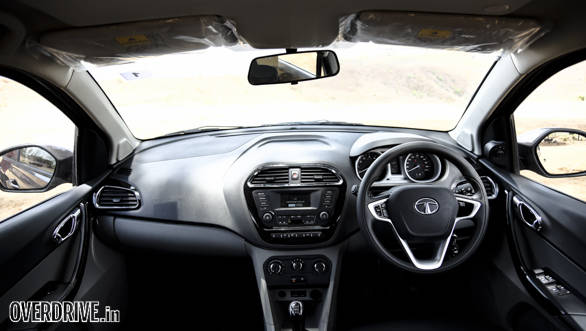 The dashboard layout is quite neat. The Harman infotainment system is the best in its class
The dashboard layout is quite neat. The Harman infotainment system is the best in its class
 Rear kneeroom is slightly less than the Celerio's
Rear kneeroom is slightly less than the Celerio's
The integrated eight-speaker Harman infotainment system (in the top XZ variant) is really impressive and belts out the music in good detail. The instrument cluster is easy to read, and I quite like the rev counter with its needle turning red at the rev limit, acting like a shift light akin to what you seen in some motorcycles. The seats upfront are very comfortable with good lumbar support and thick bolstering, which hold you well. The rear bench is comfortable too, and there's adequate knee and shoulder room for two/three at the back.
The Celerio's cabin, on the other hand, has grown too long in the tooth now and the plastics are of a lower grade. The seats are firm but lack the support that the seats in the Tiago provide. The use of beige on the door pads and the dashboard lend the car an airy feel which is augmented by its taller roofline. However, with the Tiago's cabin looking like one from a segment above, the Celerio's suddenly feels bland.
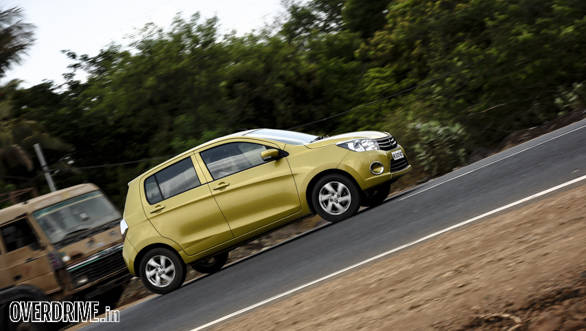 The Celerio's design is good but pales in comparison to the Tiago
The Celerio's design is good but pales in comparison to the Tiago
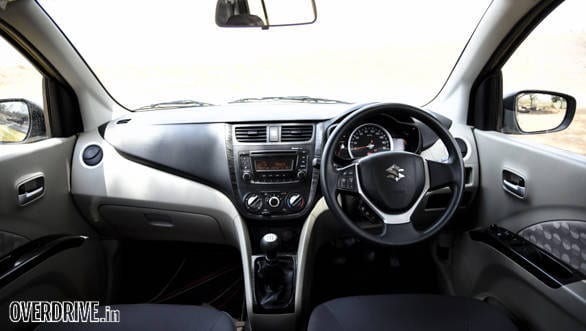 Biege interiors give it an airy feel
Biege interiors give it an airy feel
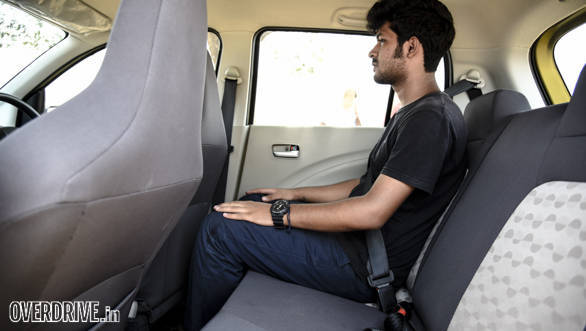 Celerio's cabin offers better rear knee and head room
Celerio's cabin offers better rear knee and head room
Build quality has surprisingly improved in the Tata, but there are still a few misses. The panel gaps, for instance, are a little inconsistent, and it's surprising how Tata can't get this right even after so many years in the market. That said, the car does have the best build among other Tatas, but when you throw the Celerio into the mix, you notice that it has a fair amount of ground to still catch up.
Engines and Performance
The Celerio diesel was the darling of the kmpl brigade when it arrived. The 793cc, two-cylinder motor develops a seemingly paltry 47.5PS, but the 125Nm of torque available at 2,000rpm gives the Celerio a sprightly nature. The car feels quick on its feet when moving up the gears and it's pretty quick in the city.
 Twin-cylinder engine is too noisy but offers terrific fuel economy
Twin-cylinder engine is too noisy but offers terrific fuel economy
The abundance of torque from the word go also means the Celerio sprints from 0-100kmph in 21.9 seconds, which isn't bad for a twin-cylinder engine. However, it begins to run out of steam as the speeds climb, and there's no going beyond 130kmph. At those speeds, the engine does protest vociferously, and it's best to stick to high speeds only when in a hurry. In fact, the noise and vibrations (inherent of a twin-pot motor) are simply annoying, and the Celerio is definitely not the car to go out on a date or ferry someone important.
That said, the trade-off for putting up with the cacophony is the brilliant fuel efficiency. With 19.1kmpl in the city and an astonishing 27.2kmpl on the highway, the Celerio is amongst the most fuel- efficient cars in the country.
The Tiago's three-pot motor, in contrast, is more refined than the Celerio's, and that's one of the engine's biggest plus points. The torque is higher and its spread is more linear. The 140Nm of torque ranging from 1,800-3,000rpm gives it better driveability too.
 The three-cylinder engine is refined and has good driveability in town as well as on highways
The three-cylinder engine is refined and has good driveability in town as well as on highways
The higher horsepower also results in a better top speed of 154kmph, making it better suited for highway driving too.
The engine does have the typical diesel clatter, especially at idle, which is audible on the outside but well damped inside the cabin. The overall NVH levels are better than the Celerio's, and you'll definitely appreciate it when you're behind the wheel for long hours.
Ride and Handling
These cars have completely different set-ups, with the Celerio turning out as the stiffer of the two. This does lend it slightly better handling and a more communicative front end than the Tiago's. The steering is heavier too, even at city speeds, and that gives it a sense of directness which enthusiastic drivers would appreciate. The suspension soaks up the bumps pretty well but not as well as the Tiago's. This is more apparent at low speeds where you feel the bumps and potholes.
The Tiago's suspension is tuned primarily to iron out the quintessential Indian road surface, and it does a stellar job at that. Low speed or not, the car simply glides through similar bumps and potholes. However, you can hear a few thuds over the really bad stuff, but you don't feel a thing. There is one problem though. When you load the car with five people and a weekend's worth luggage, the rear suspension runs out of travel. So, every time you go over a speed breaker, the rear lands hard. This is not the case with the Celerio, which has better balance.
The EPAS system in the Tiago feels quite light at city speeds. This makes it easier to manoeuvre around tight spots. What's impressive is the way the steering weighs up with the increase in speeds. That said, it does feel a little numb at the centre when cruising at triple-digit speeds when compared to the Celerio's steering rack and lacks the level of feedback when tackling corners at high speeds. Despite these shortcomings, the Tiago is planted around corners and can carry as much speed as the Celerio.
The Celerio's brakes are sharp and have good progression. There's better feel through the pedal, and the car comes to halt from 100kmph without any drama. The Tiago's brakes offer good bite but lack the feedback of the Celerio's. The rear also tends to squirm a bit under hard braking, from 100kmph.
Verdict
The Maruti Suzuki Celerio is a good product and was one of our favourite cars when it was part of the OD garage. The Tata Tiago, however, has come in with its homework done. It has the better design of the two, is loaded with more features and more importantly has the better engine of the two. And what finally nails it for the Tata is the pricing. At Rs 6.7 lakh (on-road Mumbai), for the top-spec XZ variant, the Tiago is far cheaper than the Rs 7.30 lakh (on-road Mumbai) that the Celerio ZDI (O) demands.
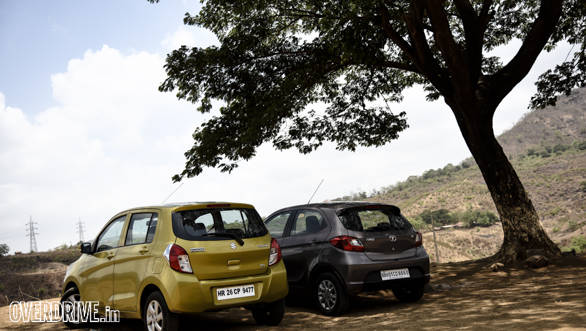
While driving the Tiago diesel for more than 500km has not resulted in any problems so far, we will reserve our judgement about the Tata's longevity as Lijo puts in the miles on his long termer. So there you have it the Tata Tiago is the new king of the small diesel car segment, dethroning the Celerio. I can't remember the last time a Tata did that to a Maruti Suzuki.
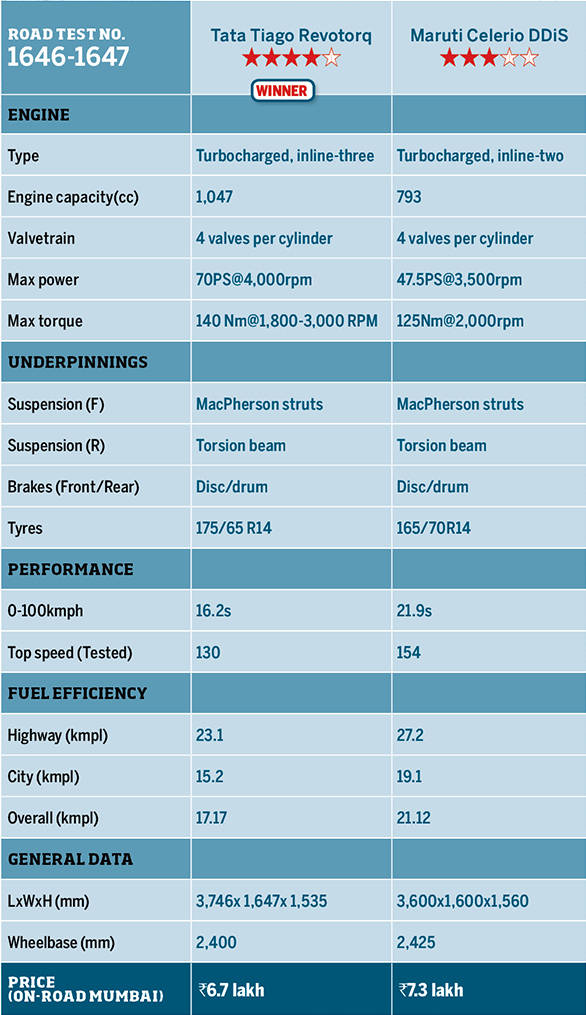
Starts Rs 4.6 Lakhs
1199cc
Automatic
-NA-
113
-NA-
Starts Rs 4.99 Lakhs
998cc
Automatic
67
89
26 Kmpl
